Topics
Category
Era
Fort Snelling in the Expansionist Era, 1819–1858
The U.S. Army built Fort Snelling between 1820 and 1825 to protect American interests in the fur trade. It tasked the fort’s troops with deterring advances by the British in Canada, enforcing boundaries between the region’s Native American nations, and preventing Euro-American immigrants from intruding on Native American land. In these early years and until its temporary closure in 1858, Fort Snelling was a place where diverse people interacted and shaped the future state of Minnesota.
The junction of the Mississippi and Minnesota Rivers, called Bdote by the Dakota, has been a sacred gathering place for centuries. Some oral traditions refer to it as the origin place of the first Dakota people.
In 1805 the U.S. Army ordered Lieutenant Zebulon Pike to find the source of the Mississippi River and select sites for military posts in the Northwest Territory. When he arrived at Bdote, Pike made an unauthorized agreement with two Dakota leaders to acquire land for a U.S. fort. He promised that the government would construct a trading post in the area.
The trading post was never built, and Pike’s land cession deal was not binding. In 1819, however, soldiers of the Fifth U.S. Infantry Regiment arrived at the river junction. Construction of the fort began the following year when Colonel Josiah Snelling took command. Initially called Fort St. Anthony, the fort was completed in 1825 and named in honor of its leader. Buildings were constructed by the river landing and stables nearby. The fort had the first European-American school and hospital in what would become Minnesota. Its troops enjoyed a high standard of health relative to other posts.
In its first forty years, the fort’s garrison fluctuated between eighty and three hundred men. Until 1848, it quartered elements of the Fifth and First U.S. Infantry Regiments. Afterward, various infantry, cavalry, and artillery units occupied the post. Its commanders, including the illustrator Seth Eastman, were officers of varying rank.
Soldiers spent their time building new structures, maintaining old ones, and simply surviving at a post hundreds of miles from its nearest supply base. They tended four hundred acres of gardens, hauled supplies, cut firewood, milled flour at St. Anthony Falls, and stood on guard duty. Officers and some enlisted men had families at the fort. Women worked as laundresses, domestic servants, and hospital matrons.
The St. Peters Indian Agency, built on the Fort Snelling military reservation in 1820, was a key site for diplomacy between the U.S. government and Native American nations. The Indian Agent acted on behalf of the U.S. government. Dakota and Ojibwe people often met with the Agent and the fort commandant for political reasons, including the signing of the Treaty of St. Peters in 1837. The American Fur Company post across the river at Mendota drew Dakota and Ojibwe to the area for trade.
Though it was illegal, slavery existed at Fort Snelling. Between fifteen and thirty enslaved people lived there at any one time throughout the 1820s and 1830s. They likely cooked, cleaned, and did laundry and other chores. Their owners were army officers, government officials, and fur traders.
Lawrence Taliaferro, the St. Peters Indian Agent between 1820 and 1839, relied heavily on the labor of enslaved people. One of them, a woman named Harriet Robinson, married Dred Scott in the mid-1830s. The Scotts’ residence at Fort Snelling formed part of the basis of their suit for freedom in the 1857 U.S. Supreme Court case Scott v. Sandford.
There was little armed conflict at the fort during the expansionist era. The site never came under attack, and U.S. soldiers never engaged Native Americans in open combat. There are, however, some records of soldiers committing acts of violence against Native Americans.
Fort Snelling remained in service for nearly forty years. By 1858, when Minnesota became the thirty-second state, the U.S. government had established forts further west, and Fort Snelling was no longer considered necessary. The post closed later that year.
The government sold the fort and its military reservation to Franklin Steele, a local businessman and former fort sutler. Steele intended to sell off lots of land for a city named "Fort Snelling." Though his sheep often grazed on the fort’s parade ground, Steele never built the city.
Bibliography
Beeson, Lewis ed. Snelling, Henry Hunt. Memoirs of a Boyhood at Fort Snelling. Minneapolis: Private Print, 1939.
Case, Martin W. “‘Pike’s Treaty’ – One Bdote Area Myth.” Bdote Memory Map, March 14, 2010.
https://bdote.wordpress.com/2010/03/14/pike-treaty-the-bdote-area-myth/
Hall, Stevens. Fort Snelling: Colossus of the Wilderness. St. Paul: Minnesota Historical Society Press, 1987.
Hanson, Marcus L. Old Fort Snelling, 1819–1858. Minneapolis: Ross & Haines Inc., 1958.
Historic Fort Snelling. History.
http://www.historicfortsnelling.org/history
M683
Josiah Snelling Papers, 1779–1828
Manuscript Collection on microfilm, Minnesota Historical Society, St. Paul
http://www.mnhs.org/library/findaids/00824.xml
Description: Photocopied letters written by Josiah Snelling.
Kier, Samuel Martin. Two Centuries of Valor: The Story of the 5th Infantry Regiment. Pacific Grove, CA: Park Place Publications, 2010.
Kunz, Virginia Brainard. “Colonel Snelling’s Journal: Orders, Letters, Lists of Possessions.” Ramsey County History 6, no. 1 (Spring 1969): 9–11.
M35, M35-A, P1203
Lawrence Taliaferro Papers, 1813–1868
Manuscript Collection, Minnesota Historical Society, St. Paul
http://www.mnhs.org/library/findaids/m0035.pdf
Description: Papers relating to Taliaferro’s tenure as Indian Agent at St. Peters near Fort Snelling from 1820 to 1839.
Prucha, Paul F. Broadax & Bayonet: The Role of the United States Army in the Development of the Northwest, 1815–1860. Lincoln, NE: University of Nebraska Press, 1995.
Wingerd, Mary Lethert. North Country: The Making of Minnesota. Minneapolis: University of Minnesota Press, 2010.
Ziebarth, Marilyn, and Alan Ominsky. Fort Snelling: Anchor Post of the Northwest. St. Paul: Minnesota Historical Society Press, 1970.
Related Resources
Primary
P516
Giacomo Beltrami Papers, 1824–1867
Manuscript Collection, Minnesota Historical Society, St. Paul
Description: Photocopies of selected items concerning Beltrami’s explorations up the Mississippi River.
A/_J38
Nathan S. Jarvis Letters, 1833–1852
Manuscript Collection, Minnesota Historical Society, St. Paul
Description: Letters describing daily life at Fort Snelling, 1833–1836.
Secondary
Coffman, Edward M. The Old Army: A Portrait of the American Army in Peacetime, 1784–1898. New York: Oxford University Press, 1986.
Jones, Evan. Citadel in the Wilderness: The Story of Fort Snelling and the Northwest Frontier. Minneapolis: University of Minnesota Press, 1966.
Lyman, George D. John Marsh, Pioneer. New York: Scribner’s Sons, 1930.
Urwin, Gregory J.W., and Darby Erd. The United States Infantry: An Illustrated History, 1775–1918. Norman, OK: Oklahoma University Press, 1988.
Web
Bdote Memory Map.
http://bdotememorymap.org/
Facebook.com. Historic Fort Snelling.
https://www.facebook.com/historicfortsnelling?fref=ts
Friends of Fort Snelling. A Brief History of Fort Snelling and Its Restoration.
https://www.fortsnelling.org/fofs-home
Related Video
Gwen Westerman – What Fort Snelling Means to Me
Lynne Jackson on Dred and Harriet Scott, her ancestors
Related Images
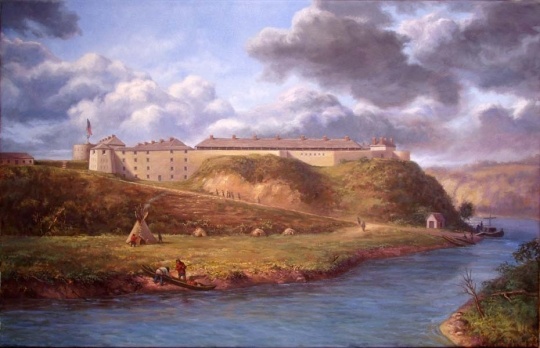
Fort Snelling
Fort Snelling, c.1835. Oil on canvas painting by David Geister, 2006.
All rights reserved
Holding Location
More Information
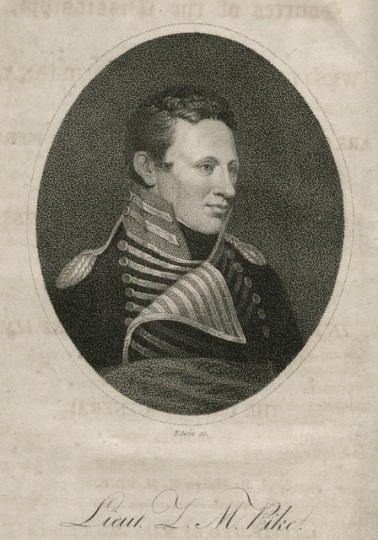
Zebulon M. Pike
Public domain
Holding Location
More Information
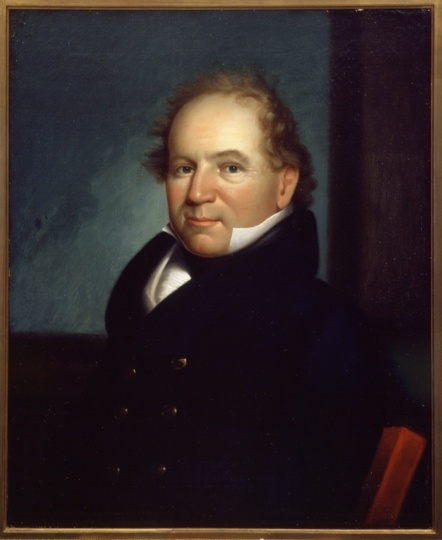
Colonel Josiah Snelling
Public domain
Holding Location
More Information

Army infantry officer's uniform epaulets worn by Nathan Clark
All rights reserved
Holding Location
More Information
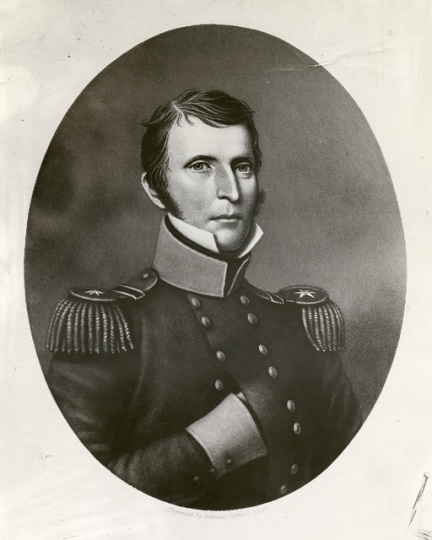
Lieutenant Colonel Henry Leavenworth
Public domain
Holding Location
More Information
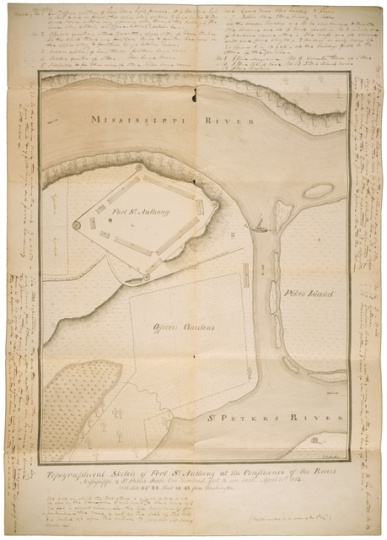
Topographical sketch of Fort St. Anthony (Fort Snelling)
Public domain
Holding Location
More Information
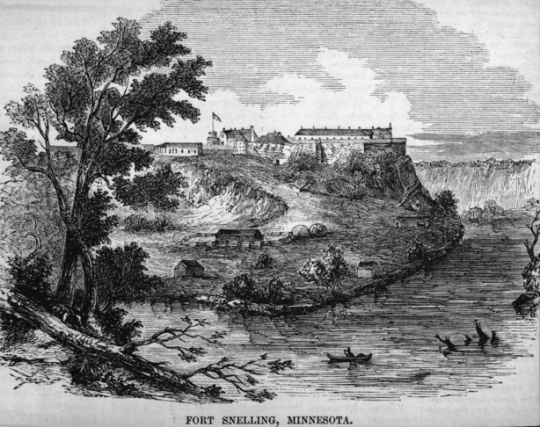
Lithograph of Fort Snelling
Public domain
Holding Location
More Information
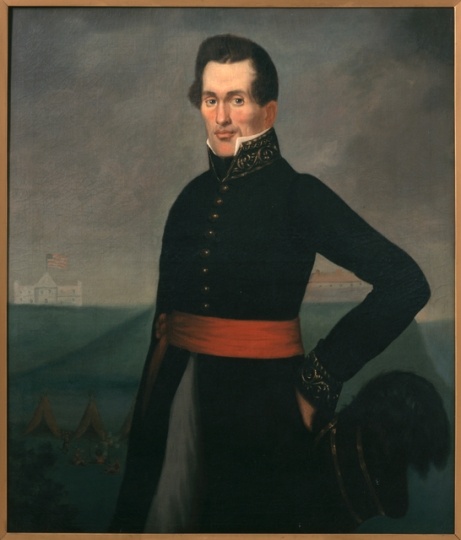
Lawrence Taliaferro
Public domain
Holding Location
More Information
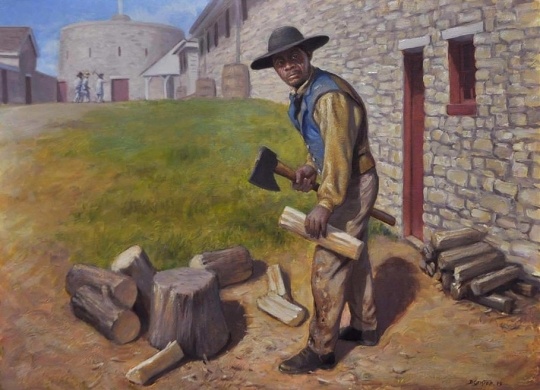
Dred Scott at Fort Snelling
All rights reserved
Holding Location
More Information
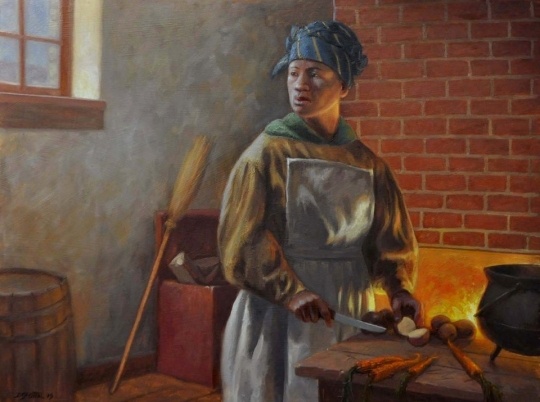
Harriet Scott at Fort Snelling
All rights reserved
Holding Location
More Information
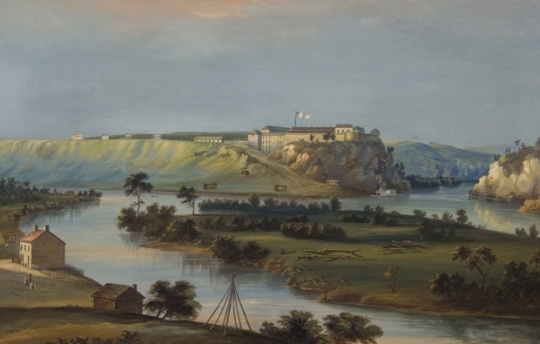
Painting of Fort Snelling
Public domain
Holding Location
More Information
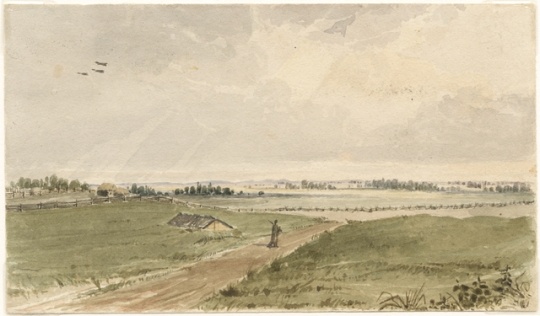
Prairie north of Fort Snelling
Public domain
Holding Location
More Information
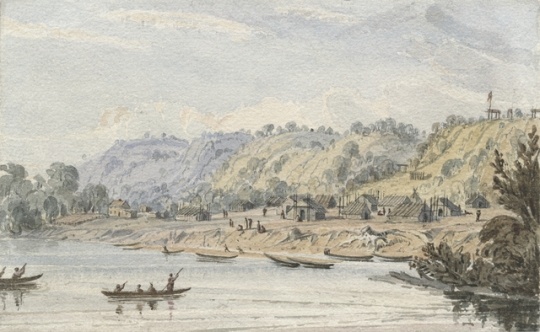
Taoyateduta’s village at Kaposia
Public domain
Holding Location
More Information
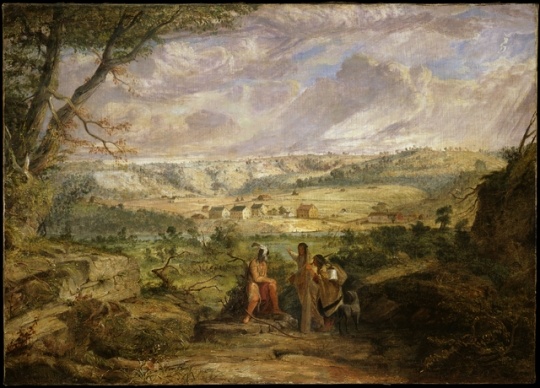
Mendota from Fort Snelling
Public domain
Holding Location
More Information
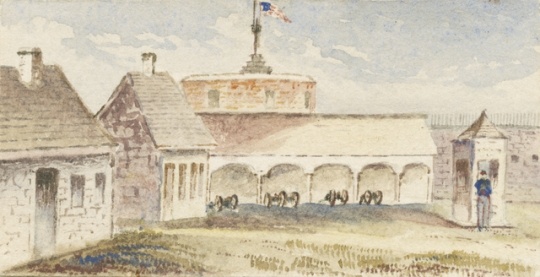
Interior of Fort Snelling
Public domain
Holding Location
More Information
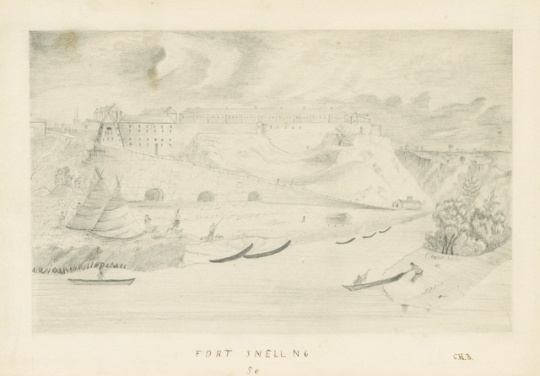
Sketch of Fort Snelling
Public domain
Holding Location
More Information
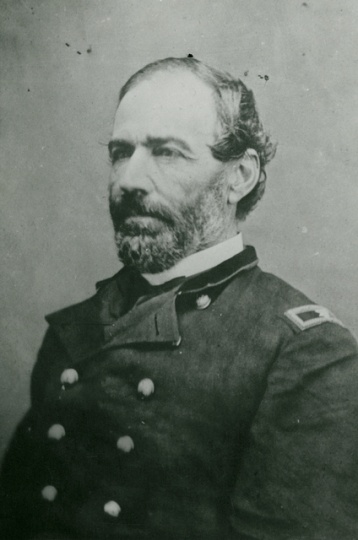
Seth Eastman
Public domain
Holding Location
More Information
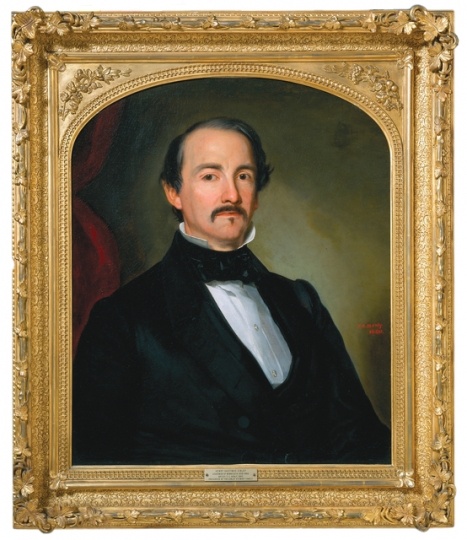
Henry H. Sibley
Public domain
Holding Location
More Information
Related Articles
Turning Point
On September 10, 1820, soldiers of the Fifth U.S. Infantry, under the command of Colonel Josiah Snelling, begin construction of Fort Snelling.
Chronology
1805
1817
1819
1820
1823
1825
1827
1827
1828
1836
1837
1840
1841
1848
1858
Bibliography
Beeson, Lewis ed. Snelling, Henry Hunt. Memoirs of a Boyhood at Fort Snelling. Minneapolis: Private Print, 1939.
Case, Martin W. “‘Pike’s Treaty’ – One Bdote Area Myth.” Bdote Memory Map, March 14, 2010.
https://bdote.wordpress.com/2010/03/14/pike-treaty-the-bdote-area-myth/
Hall, Stevens. Fort Snelling: Colossus of the Wilderness. St. Paul: Minnesota Historical Society Press, 1987.
Hanson, Marcus L. Old Fort Snelling, 1819–1858. Minneapolis: Ross & Haines Inc., 1958.
Historic Fort Snelling. History.
http://www.historicfortsnelling.org/history
M683
Josiah Snelling Papers, 1779–1828
Manuscript Collection on microfilm, Minnesota Historical Society, St. Paul
http://www.mnhs.org/library/findaids/00824.xml
Description: Photocopied letters written by Josiah Snelling.
Kier, Samuel Martin. Two Centuries of Valor: The Story of the 5th Infantry Regiment. Pacific Grove, CA: Park Place Publications, 2010.
Kunz, Virginia Brainard. “Colonel Snelling’s Journal: Orders, Letters, Lists of Possessions.” Ramsey County History 6, no. 1 (Spring 1969): 9–11.
M35, M35-A, P1203
Lawrence Taliaferro Papers, 1813–1868
Manuscript Collection, Minnesota Historical Society, St. Paul
http://www.mnhs.org/library/findaids/m0035.pdf
Description: Papers relating to Taliaferro’s tenure as Indian Agent at St. Peters near Fort Snelling from 1820 to 1839.
Prucha, Paul F. Broadax & Bayonet: The Role of the United States Army in the Development of the Northwest, 1815–1860. Lincoln, NE: University of Nebraska Press, 1995.
Wingerd, Mary Lethert. North Country: The Making of Minnesota. Minneapolis: University of Minnesota Press, 2010.
Ziebarth, Marilyn, and Alan Ominsky. Fort Snelling: Anchor Post of the Northwest. St. Paul: Minnesota Historical Society Press, 1970.
Related Resources
Primary
P516
Giacomo Beltrami Papers, 1824–1867
Manuscript Collection, Minnesota Historical Society, St. Paul
Description: Photocopies of selected items concerning Beltrami’s explorations up the Mississippi River.
A/_J38
Nathan S. Jarvis Letters, 1833–1852
Manuscript Collection, Minnesota Historical Society, St. Paul
Description: Letters describing daily life at Fort Snelling, 1833–1836.
Secondary
Coffman, Edward M. The Old Army: A Portrait of the American Army in Peacetime, 1784–1898. New York: Oxford University Press, 1986.
Jones, Evan. Citadel in the Wilderness: The Story of Fort Snelling and the Northwest Frontier. Minneapolis: University of Minnesota Press, 1966.
Lyman, George D. John Marsh, Pioneer. New York: Scribner’s Sons, 1930.
Urwin, Gregory J.W., and Darby Erd. The United States Infantry: An Illustrated History, 1775–1918. Norman, OK: Oklahoma University Press, 1988.
Web
Bdote Memory Map.
http://bdotememorymap.org/
Facebook.com. Historic Fort Snelling.
https://www.facebook.com/historicfortsnelling?fref=ts
Friends of Fort Snelling. A Brief History of Fort Snelling and Its Restoration.
https://www.fortsnelling.org/fofs-home





















